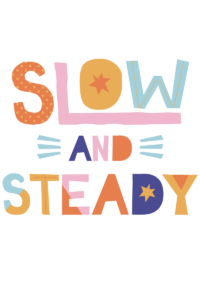But let’s get real, it’s not like January 1st has some mystical powers that realign all that’s wrong in the world. The beginning of the year will have some of the same old shit.
The virus will still be around. We might continue to teach remotely. Motivation and mindset may still be on a low. That’s expected as long as we look for different ways to approach this new year.
One of the most beneficial shifts we could make is using gratitude journals. And I’m not talking about gratitude journaling for you (although that is beneficial); I mean for the kids.
WTF is it?
It’s exactly what it sounds like journal writing, where you express gratitude-thinking and appreciating the good things that happen to us in our lives.
Teachers usually do activities similar to this during Thanksgiving. The time of year to give thanks. But we miss the mark because we don’t carry out this activity throughout the school year. That means providing daily practice for creating a lifelong attitude of finding the good in everything.

What Are The Benefits?
Research supports that gratitude improves the lives of students and adults. Keeping a journal daily:
- Can lower stress levels, make you feel calmer.
- Helps increase student achievement.
- Helps with building stronger and healthier relationships with peers and teachers.
- Helps you become more self-aware, learn more about yourself.
- Helps you feel accomplished.
- Enhances empathy and emotional intelligence.
- Changes the perspective neurons.
The brain loves to remember negative experiences. Journaling helps with shifting towards optimism, building a positive mindset.
According to Jeffrey Froh, an assistant professor of psychology at Hofstra University, “We know that grateful kids are happier and more satisfied with their lives. They report better relationships with friends and family, higher GPAs, less materialism, less envy, and less depression, along with a desire to connect to their community and want to give back…”.

How To Get It Started In Your Classroom
1. Have students find time to write daily. Make it a part of your classroom routine. Help students build this habit.
2. Don’t dictate how long they should write. This should be an authentic writing opportunity. Please don’t ruin it by putting expectations and limitations. And above all DO NOT GRADE IT! This ruins the whole point of it.
3. There is truly no wrong way to journal. It can be expressed artistically. Students could doodle, draw, paint, or write.
4. The journal itself doesn’t have to be fancy or a pretty printable you found. A simple composition notebook works just fine. Students can get creative inside of it or even decorate the outside.
5. Don’t force prompts. For example, name three people you’re grateful for and why. STOP THAT! That’s not natural. Being thankful is organic. Don’t make this another rigid activity.
6. Encourage students to be specific. For example, writing about people and the experiences they’ve had.
Side note- Students may not used to this kind of thinking and writing. You can provide them with a list of prompts for them to choose from. It will help get those juices flowing. Gratitude Journal Prompts PDF
7. Don’t have students share their gratitudes; they are private. What you can do is ask students to share the idea they used. For example, a student may say, “Today I wrote about a memory” or “today I doodled my favorite food.”
8. Use read alouds that express gratitude.
The Last Stop On Market Street
Thank You, Mr. Panda
The Giving Tree
Grateful Ninja
Zen Pig: The Art Of Gratitude
My Attitude Of Gratitude: Growing Grateful Kids
9. Explain the role to parents and guardians.


